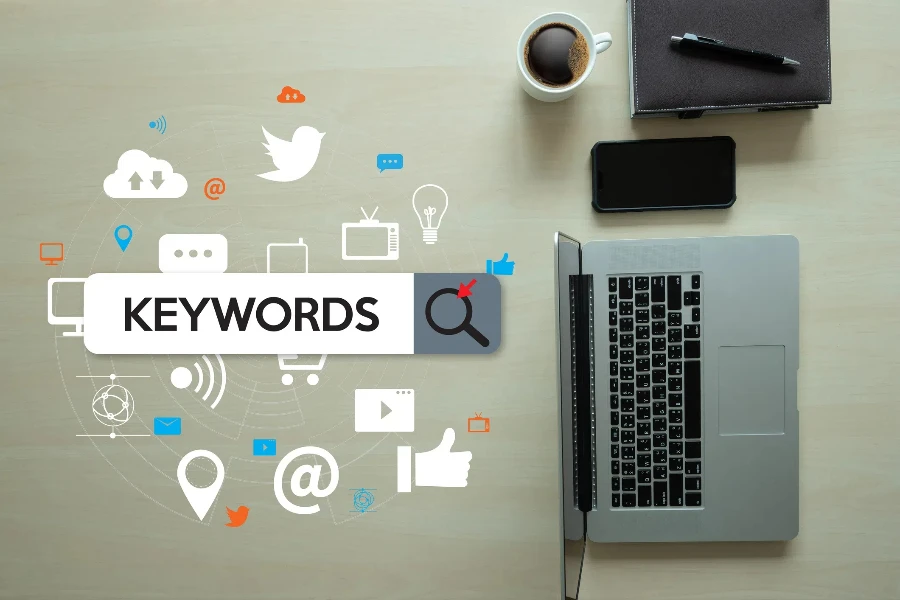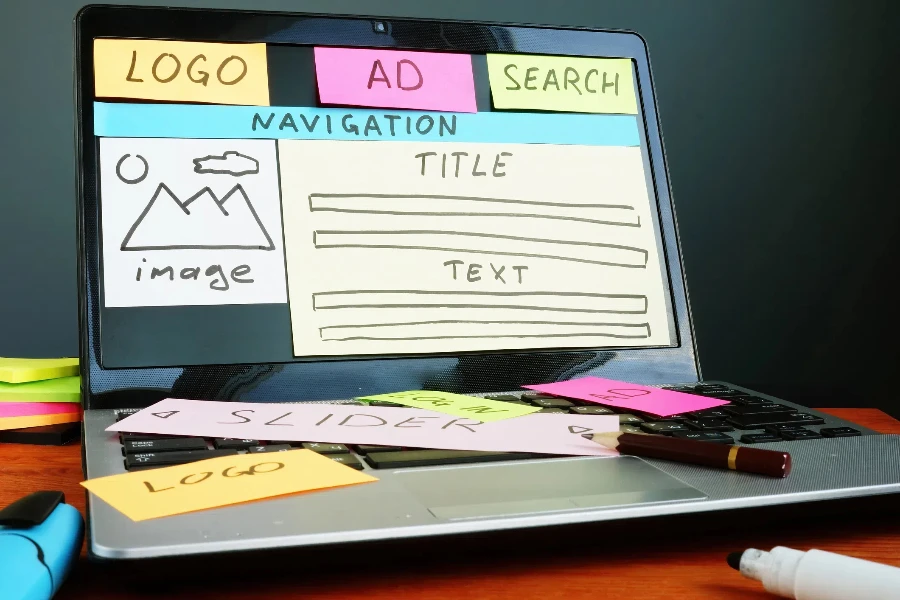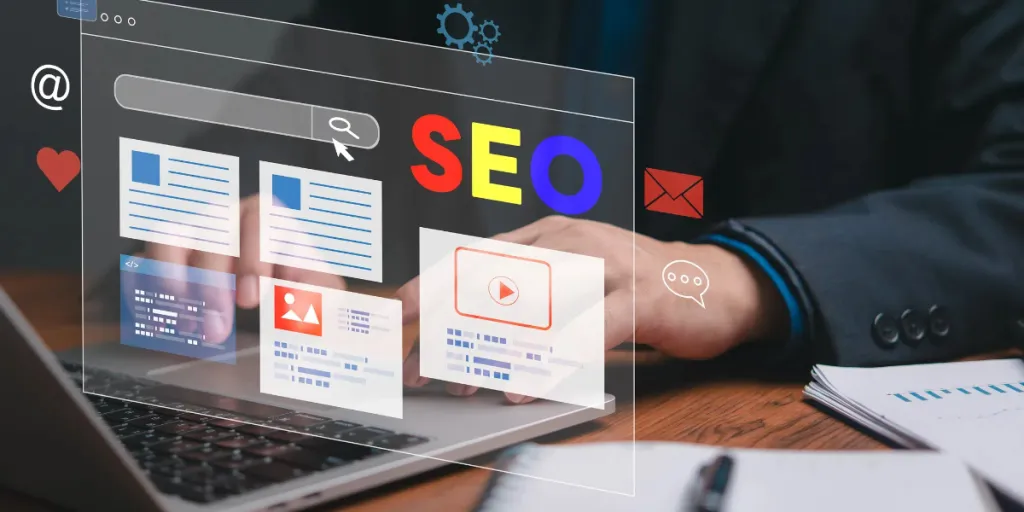Search engine optimization (SEO) is such a big topic and can feel overwhelming for new business owners. Improving your on page SEO is one strategy you can implement when building or improving your website pages to help them rank on search engines.
Read on for an overview of on-page SEO and discover seven easy strategies that can help you boost your website’s ranking in 2024.
Table of Contents
What is on-page SEO and why is it important?
On-page SEO strategies for your website
Get started today
What is on-page SEO and why is it important?
On-page SEO (search engine optimization) refers to the practice of optimizing individual web pages to rank higher and earn more relevant traffic in search engines. This involves various techniques to improve the content and HTML source code of a page.
Before we jump into how to improve on-page SEO, let’s talk about why it’s important.
Why is SEO important in e-commerce?
SEO for ecommerce websites has become not just important, but indispensable. Let’s dive into the key reasons:
- Increased visibility in search engines: The primary goal of SEO is to rank your website higher in search engine results pages (SERPs). For ecommerce sites, this means appearing on the first page when potential customers search for your products. High visibility in search results directly correlates to increased traffic, and consequently, higher sales opportunities.
- Targeted traffic with high purchase intent: Ecommerce SEO isn’t just about attracting more traffic, but the right kind of traffic. By optimizing for specific keywords related to your products, you attract visitors who are already interested in what you’re offering and are more likely to make a purchase.
- Enhanced user experience: Good SEO practices go hand in hand with creating a user-friendly website. Fast loading times, mobile responsiveness, intuitive navigation, and quality content all contribute to a better user experience, which is a crucial factor in converting visitors into customers.
- Building trust and credibility: Websites that appear higher in search results are often perceived as more trustworthy and credible by users. Effective SEO helps establish your brand’s authority, which is essential in the competitive ecommerce landscape.
- Competitive advantage: In the competitive world of ecommerce, failing to implement an effective SEO strategy means falling behind. Your competitors are likely investing in SEO, and to stay in the game, it’s imperative to do the same or risk becoming invisible to potential customers.
SEO is more than just a buzzword in the world of ecommerce; it’s a fundamental aspect of reaching potential customers, building your brand, and driving sales. By investing in SEO, you’re not only improving your website’s visibility but also setting up your ecommerce business for long-term success and growth.
On-page SEO strategies for your website

Getting started with on-page SEO doesn’t have to be challenging. Here are seven simple strategies that you can implement to start improving your websites rankings today:
1. Quality content
SEO is about optimizing your website content for search, but remember you aren’t just writing for search engines. The content on your web pages should provide helpful information for your target audience and answer the questions they are searching for.
When you think about quality content when writing blogs you are specifically aiming to write content that answers a search query and provides the reader with information. The same applies for other pages on your website. For example, your product pages should have well-written product descriptions that are unique, interesting and provide potential customers with the information they’re seeking about products.
2. Keyword optimization

A big part of SEO is keywords. When building or updating your website it’s important to start with keyword research, these keywords will inform the content on your pages.
These keywords should be strategically placed throughout the content on your webpages and used naturally. If you’re struggling to use keywords naturally in the content, consider keyword variations, and remember you can generally add words like ‘and,’ ‘it,’ ‘but’, etc. in keyword phrases.
3. Page structure (headings and subheadings)

Organize your pages so they can be skimmed by readers and search engines by using headings and subheadings.
Headings also help search engines understand the page structure and determine whether the content matches the user’s search query. So, a well structured page can help the page rank for relevant keywords.
Use keywords and keyword variations in the subheadings to provide context about the page and more information on what information is covered.
There should only be one H1 on a page and that’s the page’s headline or title and this should include the main keyword or phrase you want to rank for.
Use H2 tags as subheadings for major sections or topics within the content. Each H2 tag should introduce a new section or subtopic related to the main theme of the page. These are like chapter headings in a book.
If you need to cover content in further detail, use H3 tags for sub-sections within each H2 section. They further break down the content into more specific topics or points related to the H2 section. Think of these as subheadings under each chapter in a book.
4. Click worthy meta description

Write compelling meta descriptions that include keywords and entice users to click. While click worthy is the focus, ensure the description accurately represents the content of the page.
A meta description is a brief summary of a webpage’s content that appears in the HTML code. It is typically displayed below the page title in search engine results. Although not a direct ranking factor, a well-crafted meta description can significantly influence the click-through rate (CTR) from search engine results pages (SERPs), which indirectly impacts SEO.
5. Internal and external links

Link to relevant products, categories, and blog posts within your website to improve navigation and spread link equity.
Here’s why internal links are important for SEO:
- Links help to define the structure and hierarchy of your website, making it easier for search engines to understand the relationship between pages.
- A well-structured internal linking system ensures that all important pages are crawled and indexed.
- Links also help users navigate your website more easily, allowing them to find related content and additional resources. Also, by providing links to related content, you can keep users on your site longer, reducing bounce rates, which is a positive signal for SEO.
It’s also important to include external links to outside websites because they help to build trust with your audience.
6. Optimized url structure

Create clean, descriptive URLs that include keywords and reflect the content of the page. But, what does this look like?
The url should be simple, easy to read, and provide relevant information about the content on the page, including keywords. And remember to use a consistent structure across your website.
Examples of optimized URLs:
- E-commerce product:
- https://www.example.com/products/eco-friendly-water-bottle
- Blog post:
- https://www.example.com/blog/benefits-of-drinking-water
- Category pages:
- https://www.example.com/category/water-bottles
- About and contact pages:
- https://www.example.com/about-us
- https://www.example.com/contact-us
7. Quality, optimized images
Breaking up content with images always makes pages easier to read. Use high-quality images with descriptive file names and alt tags to help search engines understand the content.
What are alt tags?
An image alt tag (alternative text) is a brief description added to an image’s HTML tag to describe its content. Alt tags are important for several reasons: they improve accessibility for visually impaired users using screen readers, provide context if the image fails to load, and contribute to SEO by helping search engines understand the content of the images.
While your alt tags should ideally contain keywords relevant to the page, more importantly they should accurately and concisely (125 characters or less) describe the image for visually impaired users.
Example of an alt tag for an image on a blog about home workout routines. If the image is of a person doing a plank exercise on a yoga mat in their living room, with dumbbells and a water bottle nearby, a good alt tag could be:
<alt=”Person doing a plank exercise on a yoga mat at home”>
Note that while you want high quality images, you don’t want images to negatively impact your page load speed. Consider compressing images for faster load times or using lazy load times which signals to the browser to wait to load the image until the user scrolls to it.
Get started today
By focusing on on-page SEO, e-commerce websites can improve their search engine rankings, attract more visitors, and ultimately increase sales and revenue. Use these tips to get started on improving your on-page SEO today.




